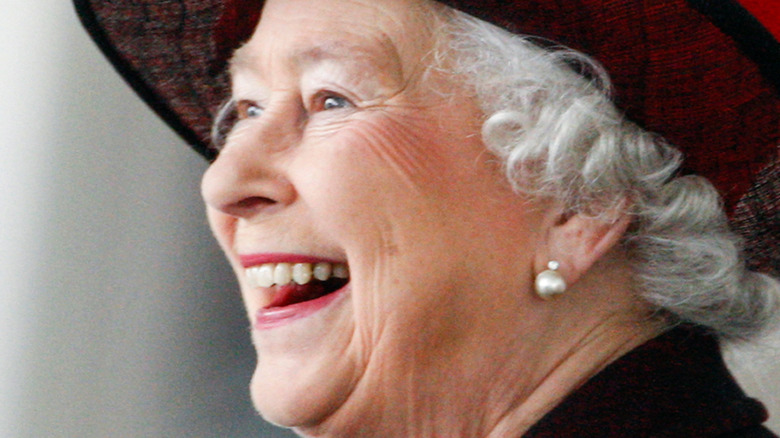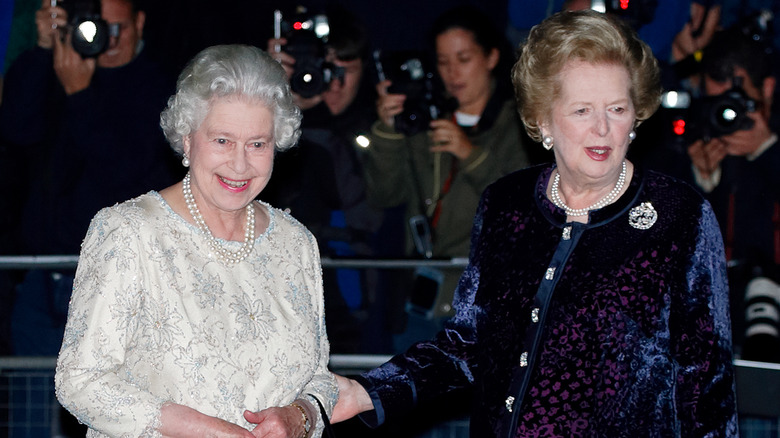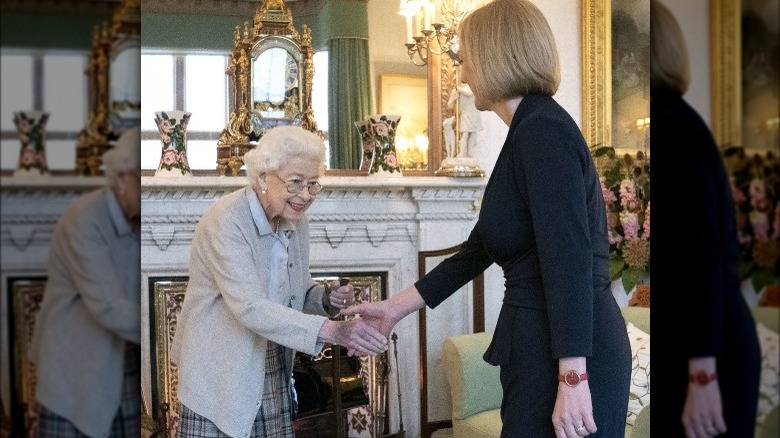How Queen Elizabeth's Final Public Appearance Ushered In A New Era For The UK
On September 8, Queen Elizabeth II died at the age of 96. As People reports, her son, King Charles III, succeeds her on the throne and is Britain's new monarch. Queen Elizabeth left behind an enormous legacy that will forever have a heavy mark on British history. At 70 years on the throne, hers was the longest reign of any British monarch. She was born on April 21, 1926, in London. Queen Elizabeth II ascended to the throne on February 6, 1952, after the passing of King George VI (per Biography). She was just 25 years old at the time. Her official coronation was on June 2, 1953.
As queen, she made numerous public appearances throughout her life. Some were annual affairs — Remembrance Day, to honor those who have died in war; the Queen's Speech, delivered at the opening of Parliament, addressing the government's priorities for the coming year. The queen did not in fact deliver the 2022 speech; King Charles spoke instead. The queen was said to be suffering from mobility issues at the time (per the BBC).
Another spectacular annual event is the Trooping of the Colour, a military parade held to mark the birthday of the reigning monarch. Queen Elizabeth attended every year but 1955 — there was a general strike on that year, according to the royal family's Instagram post, and it was cancelled as a result — usually taking part herself on horseback. That, too, was scaled back in recent years as the queen aged; she instead rode in a carriage. The queen had made numerous public appearances during her life, but her final appearance marked something different in royal routine (via Newsweek).
Several prime ministers served during the queen's reign
Part of the queen's responsibility was a working relationship with the individuals who served the U.K. as prime ministers. As the Associated Press reports, Queen Elizabeth worked with 15 different individuals in that office during her 70-year reign.
The first was Winston Churchill, who was prime minister during the reign of her predecessor, King George VI. AP reports that Churchill initially groused that the new queen was "only a child" when she took the throne, but before long — within days — he warmed to her as a monarch: "All the film people in the world, if they had scoured the globe, could not have found anyone so suited to the part," he said. Churchill served in the role until 1955. Harold Macmillan, PM from 1957-1963, opined that the queen had "the heart and stomach of a man." Margaret Thatcher (above) served the longest of any — 1979-1990 — although the relationship between the two women "was widely reported to be frosty," says the AP.
Tony Blair, 1997-2007, had the unique distinction of being the first prime minister who was born after Elizabeth became queen. According to Blair (via AP), she said to him, "You are my 10th prime minister. The first was Winston. That was before you were born." David Cameron, 2010-2016, was the youngest of Elizabeth's prime ministers. He was a schoolmate of Elizabeth's son, Prince Edward, at Heatherdown.
The queen's last appearance broke tradition
The queen had made numerous public appearances during her life, but her final appearance was out of the royal routine (via Newsweek). The final year of Queen Elizabeth's life was marked by health issues and missed public appearances, all of which drew fervent media attention. As "Today" reports, the queen had been hospitalized back in October 2021, leading to a canceled Northern Ireland trip. The same month, doctors advised against her going to the climate summit in Scotland. She then had to miss Remembrance Sunday due to a back sprain. In February 2022, she caught COVID-19. All of this came on top of the death of her husband, Prince Philip, in April 2021. They had been married for 73 years.
Numerous commentators have remarked on Elizabeth's firm dedication to duty and responsibility. That was rarely more evident than during her final public appearance, on September 6 — just two days before her death, at her Balmoral estate in Scotland. That day at Balmoral, despite her health challenges, she met with the U.K.'s newest prime minister, Liz Truss (above). As Newsweek says, Balmoral traditionally was reserved for the queen's summer holiday; constitutional appearances, such as meeting with a new prime minister, take place at Buckingham Palace in London. The queen's deteriorating health had made that custom untenable.
At the news of the queen's death, Prime Minister Truss spoke from No. 10 Downing Street (per Town & Country): "Queen Elizabeth II was the rock on which modern Britain was built. Our country has grown and flourished under her reign. Britain is the great country it is today because of her."


